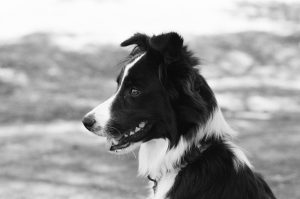Back in the Field
As my new four-legged photography assistant has grown (he’s eight months old now!), my ability to get back out into the field has slowly returned. As such, I’ve been able to go on some short trips for wildlife.

In the past month, I’ve photographed some of California’s most endangered species, including California Condors and Tule Elk. Seeing the condors was particularly special. When I was younger, the condor situation seemed bleak. In the 80s, a huge deal was made of it when the last surviving condors were captured, brought in from the wild, and put into captive breeding programs at San Diego Zoo and Los Angeles Zoo. At the time, it seemed inevitable that the condors–then numbering only 22 individuals–would soon be gone.
And yet, three decades later, they number more than 500 individuals and just over 300 of them are flying free in the wild! To see these spectacular birds in the wild, flying high above their natural habitat, was a truly magical experience.
Then, to visit the Tule Elk, who were similarly reduced to only a few dozen individuals and now number over 4,000, was just as special. These unique, small elk, endemic to California, are slowly bouncing back and it was a treat to see and photograph them.

Closer to home, I’ve also had some pleasant trips into the local mountains to photograph more common, but no less special, birds. The hummingbirds are out in force of late and it’s always a pleasure to see these colorful little jewels hovering around the flowers out in the chaparral.
The Nikkor 200-500mm f/5.6 has proved to be a capable and versatile lens for capturing these tiny powerhouses in flight. I’ve been enjoying putting the lens through its paces as I ramp up towards some bigger birding trips later this year.
Coming up next, I’ll be headed up to Owens Valley for landscape and astrophotography later this month. I’m trying out a new lens for astro, the Rokinon 14mm f/2.8, and am eager to see how it performs.
Additionally, I have an infrared converted camera on the way. There was some highly frustrating drama surrounding this acquisition, as UPS lost my beloved Nikon D200 which I had sent off for conversion. That camera had been my workhorse for more than a decade. I was hoping to give it new life with the IR conversion, but instead UPS let it vanish into the ether on its way back to me from conversion. I’m pretty broken up about it, particularly since UPS was astonishingly unhelpful about the whole situation. But I was nevertheless determined to get into IR.
As a result, I have ordered a used Nikon D800 and am now getting that converted instead, set up with a 590nm filter. It should be here soon (providing UPS doesn’t lose this one, too) and I’m hoping to take it with me to the Eastern Sierras for its first field test.

And, on the side, I’ve spent a little time revisiting 35mm film. Since I had picked up a few vintage Nikkor AI and pre-AI lenses for the IR work (some of these older lenses perform better with fewer hotspots for infrared), I figured I might as well break out some old cameras and run a few rolls of film through them. It’s always refreshing to indulge in a little film nostalgia. There’s something very therapeutic about the slow, deliberate pace of fully manual film photography. With only 36 shots, you have to think carefully and make each shot count. Every so often, I enjoy going back to my roots and reconnecting with the photographic essentials in their most raw and basic form. I find it’s a helpful tool for challenging perspectives and shaking off deeply ingrained bad habits. A breath of fresh air (or at least, a breath of developer chemicals!)
All in all, there’s lots of exciting things going on and its great to be back in action again!
 Previous post
What’s New?
Previous post
What’s New?
 Next post
Beyond the Visible
Next post
Beyond the Visible
